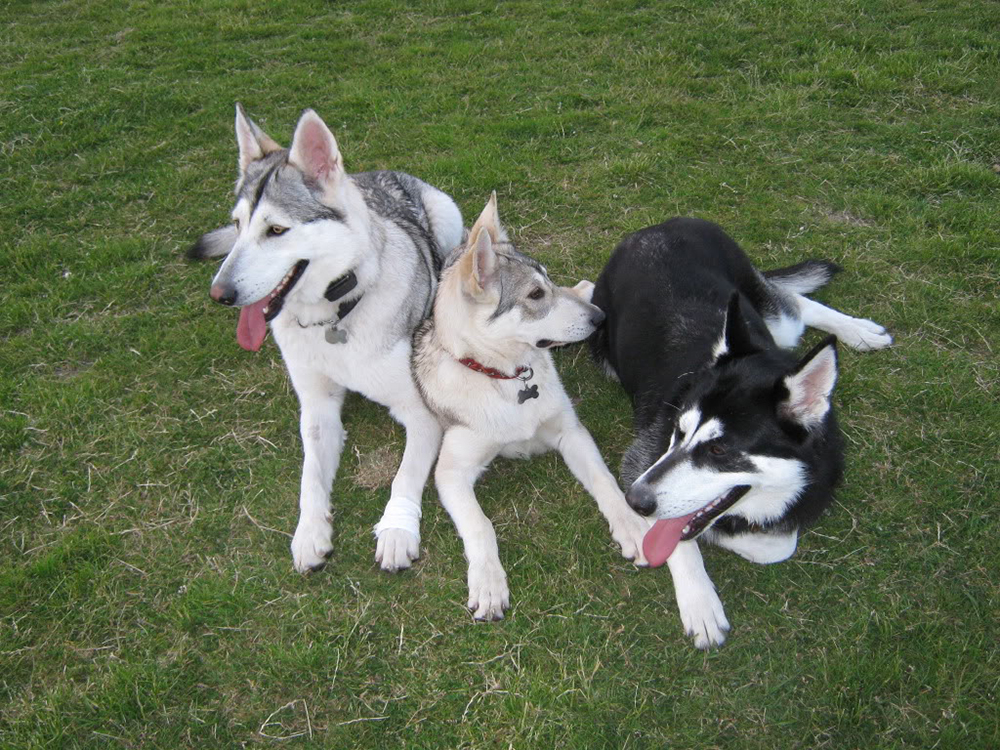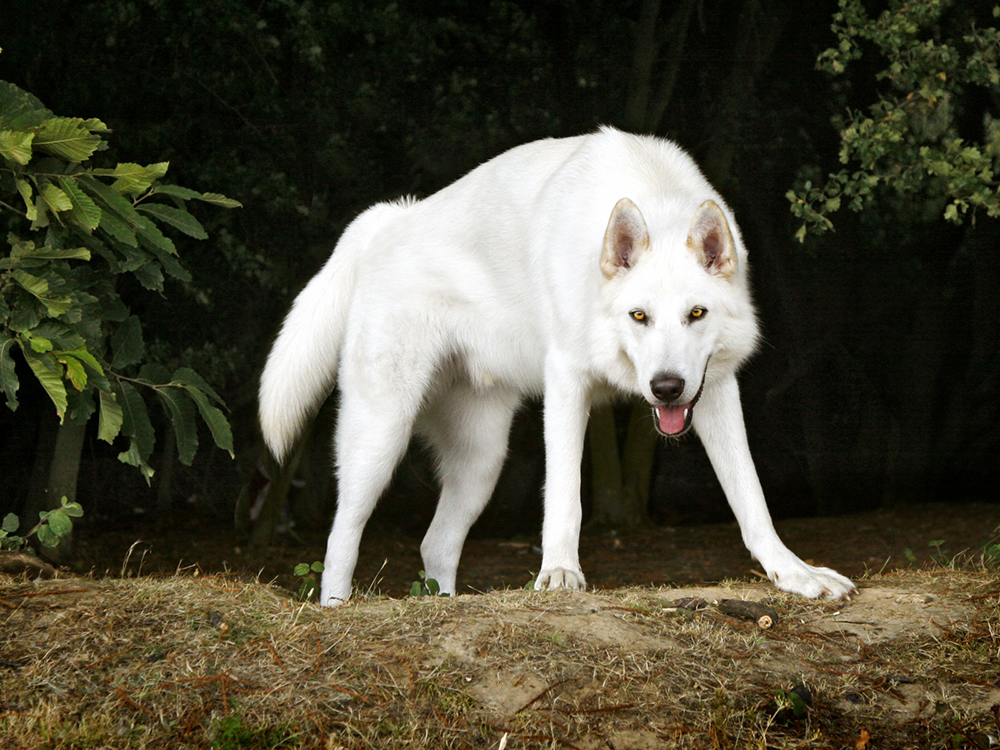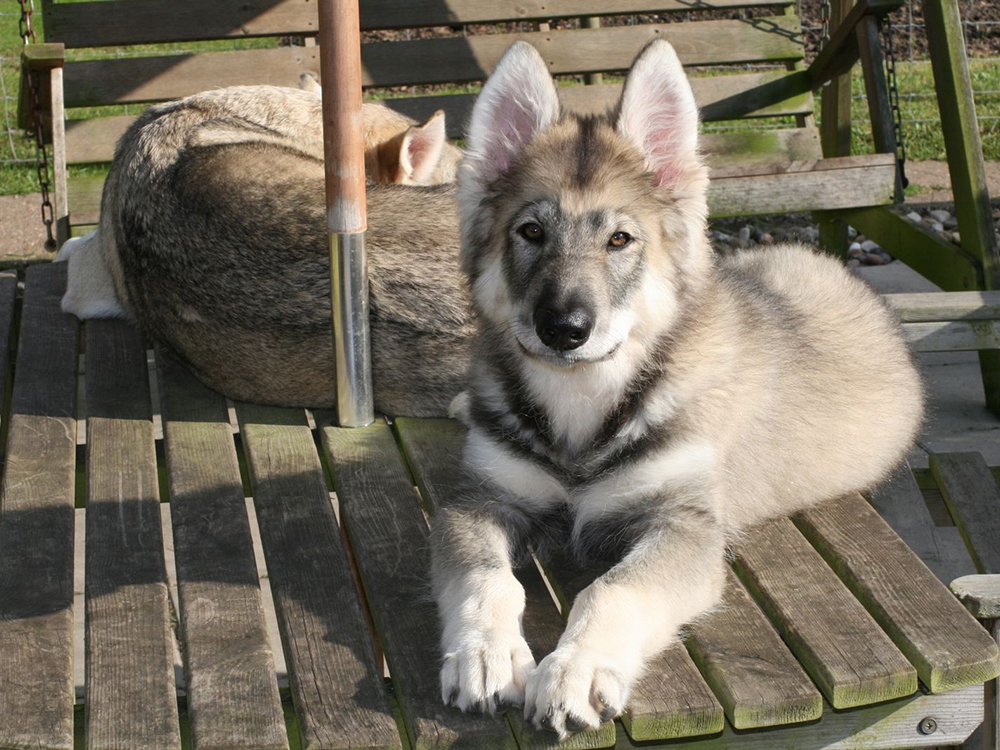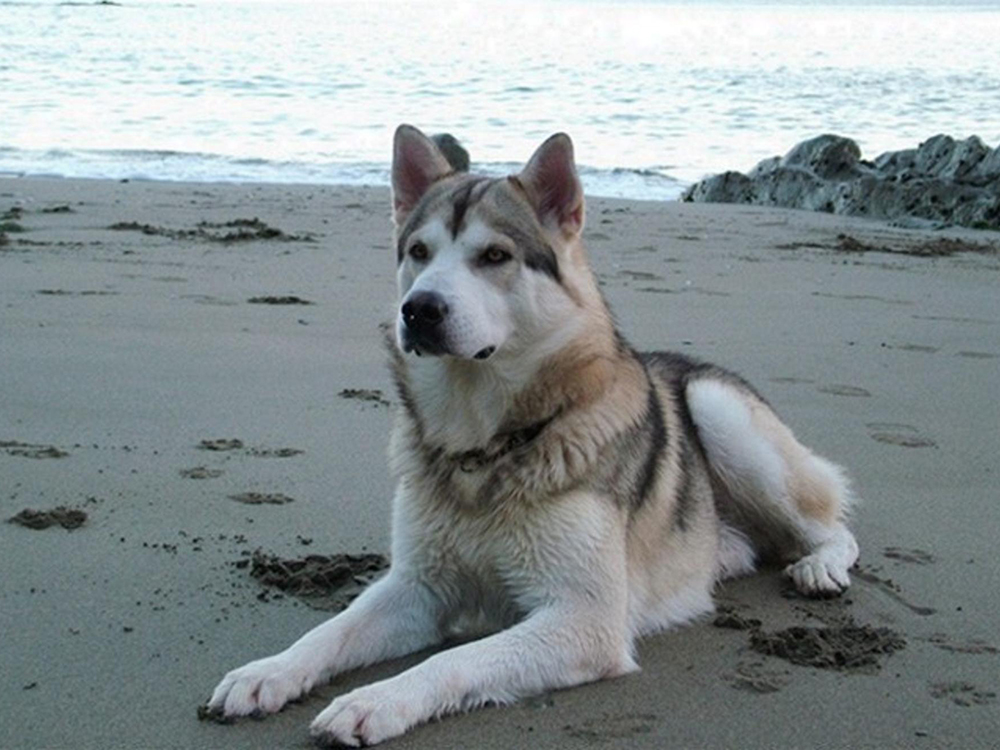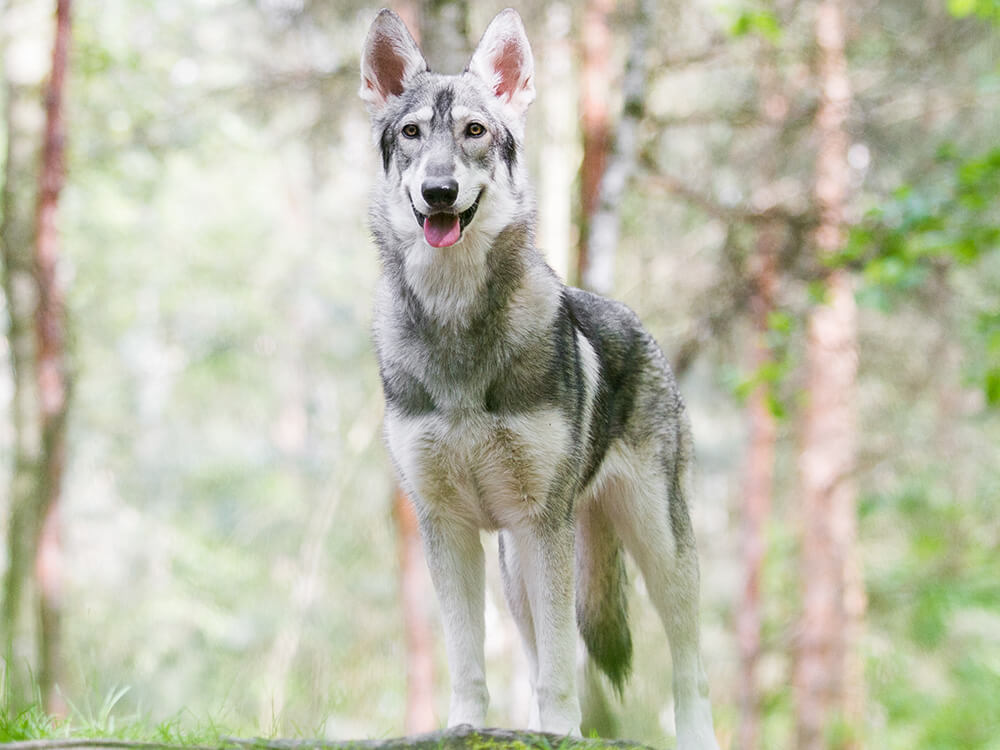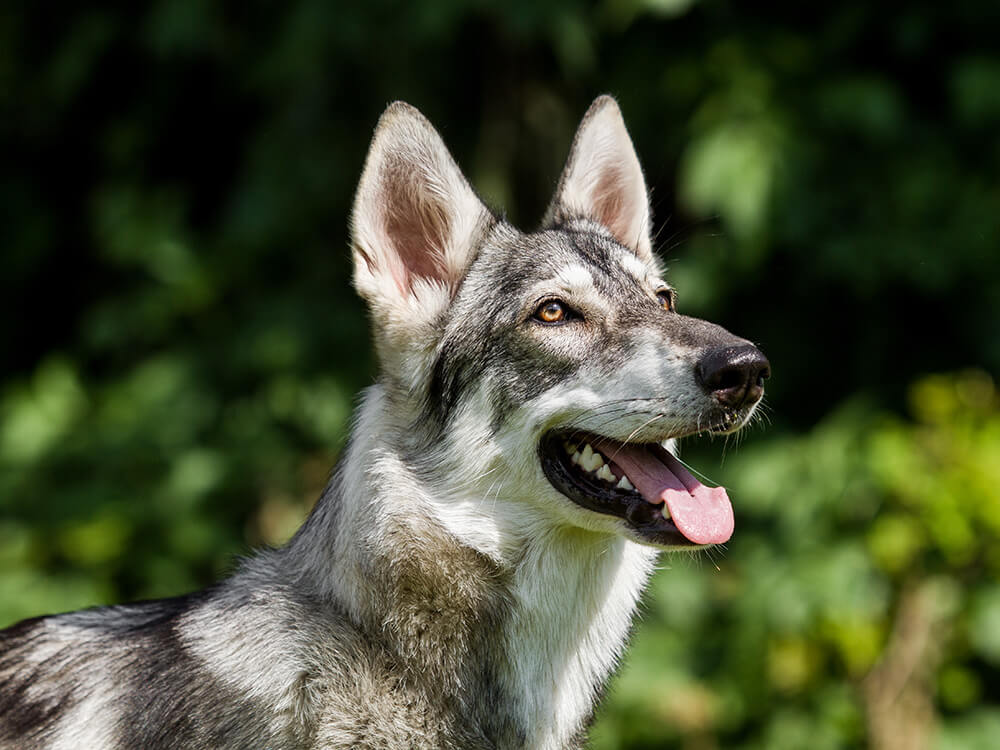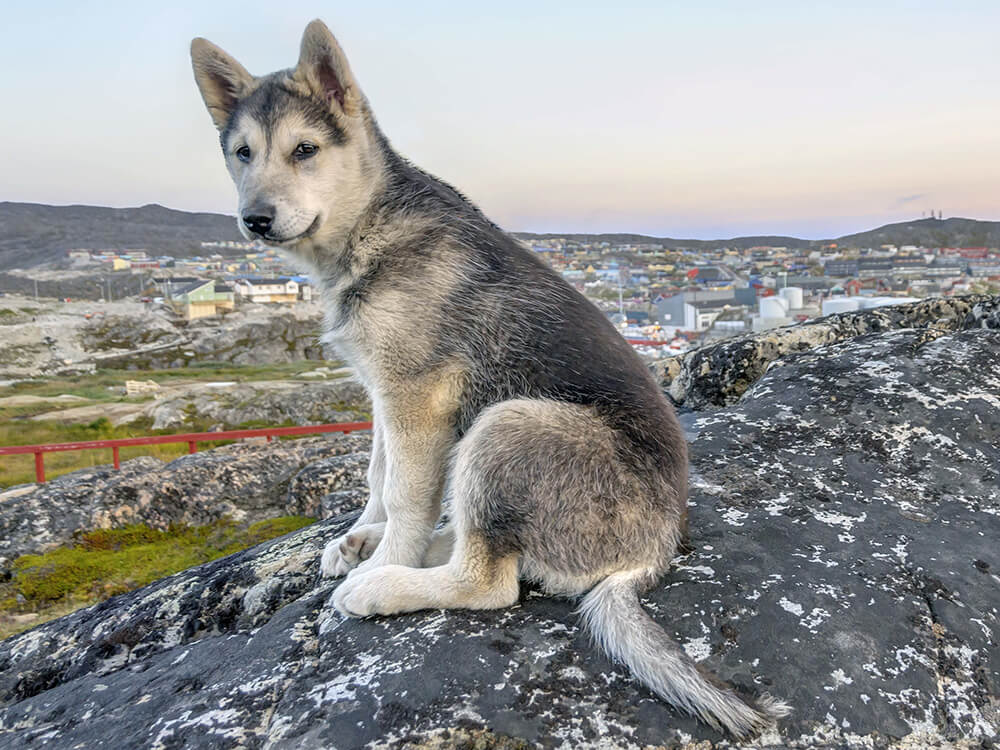
Northern Inuit Breed Pictures
Vital Breed Stats
| Height: | 58 - 81 cm M | 58 - 71 cm F |
| Weight: | 36 - 50 kg M | 25 - 38 kg F |
| Life Expectancy: | 11 - 14 years |
| KC Registered: | No |
Breed Characteristics
| Size: |  |
| Grooming: |  |
| Exercise Level: |  |
| Trainability: |  |
| Barking Level: |  |
| Good with Children: |  |
| Good with other pets: |  |
| Affectionate: |  |
| Protective: |  |
| Cost to Keep: |  |
Give a thumbs up if you love the Northern Inuit

0
More About the Breed
History
The Northern Inuit is a new breed and first appeared in the late 1980s. Eddie Harrison developed the breed with the goal of creating a wolf-like dog to be a loyal companion. Introduced into the bloodline mix are the Siberian Husky, Alaskan Malamute, German Shepherds, and a variety of Inuit dogs.
Before “Game of Thrones” was shown in 2011, the Northern Inuit is already popular in different parts of the world because of its gentle and faithful natures. However, it remains to be a rare breed and is currently not recognised by The Kennel Club or any international kennel clubs. Regardless, there are plenty of local breed clubs established to help standardise the Northern Inuit breed.
Appearance
The Northern Inuit is of medium to large build, weighing 55 to 110 pounds and standing 58 to 81 centimetres at the withers. It is an athletic and lead dog breed sporting a double coat and a straight tail. When it comes to its physical appearance, the Northern Inuit has a nicely well-proportioned head, slightly domed skull, strong muzzle that tapers toward a black nose with wide nostrils. Its jaw is strong with a perfect scissor bite. Ears are set wide apart and eyes are oblique, which can be any colour.
Northern Inuits boast of an incredibly dense and weather-resistant double coat. It is comprised of a harsh topcoat and a soft undercoat. Its tail is a bit bushy and ruffs form around the dog's neck and back of their legs. The Northern Inuit is mostly seen in colours of pure white, grey, sable, apricot, and pure black.
Grooming
Temperament
On the positive side, Northern Inuits are very sociable, easy-going and quiet dogs even when they seem to appear like their wild wolf cousins. They are people-oriented and thrive in the company of humans. Since they form strong bonds with their owners, separation anxiety may arise when they are left alone for a long period. Thus, they are more suitable for households where one family member stays at home.
The Northern Inuit can be a little boisterous when it gets excited and as such is not the best choice for families with young children. Its sheer size alone can easily knock over any small child, so make sure interaction is always supervised. Northern Inuits are social dogs, which means they get on well with other dogs especially when socialised at an early age. However, care must be taken when they are around small animals due to their high prey drive.
Intelligence
Nutrition
- Senior and less active: up to 1,960 calories daily
- Typical adults: up to 2,205 calories daily
- Physically active/working dogs: up to 2,450 calories daily
Feeding
Health
Exercise
Cost of Ownership
Since Northern Inuits were cast as "direwolves" in the show Game of Thrones, it is understandable if their market price has gone up. However, this dog breed is not as popular in the UK as it is in other parts of the world, so its price remains affordable. When you plan to you buy a Northern Inuit, it will cost you no less than £900 for a well-bred puppy. Pet insurance will likely set you back £20 to £45 a month, which is the average of most dog breeds.
Buy quality commercial dog food rich in animal protein, which is also formulated to medium to large dogs. Dog food for the Northern Inuit will cost you somewhere from £40 to £50 a month. Veterinary care is another major financial setback, which you need to prepare to pay at least £1,000 a year. As a rough guide, the cost to care for a Northern Inuit is around £70 to £110 a month.
Is a Northern Inuit Right for You?
- The Northern Inuit was bred to resemble wolves that are loyal companions.
- It is smart but has a bit of a stubborn streak, which makes training hard.
- Given its thick coat, regular brushing is required to control shedding.
- Northern Inuits are easy-going and quiet dogs.
- They are people-oriented and thrive in the company of humans.
- They are social dogs and get on well with other dogs.






